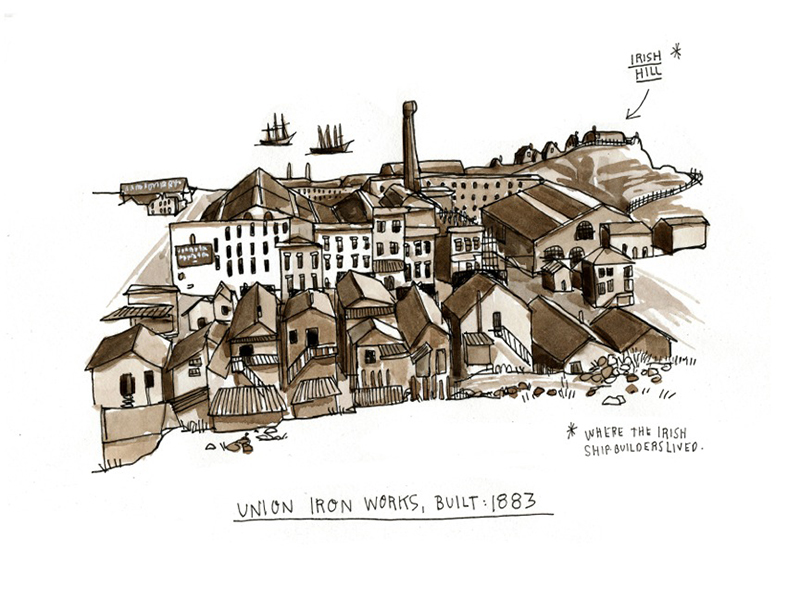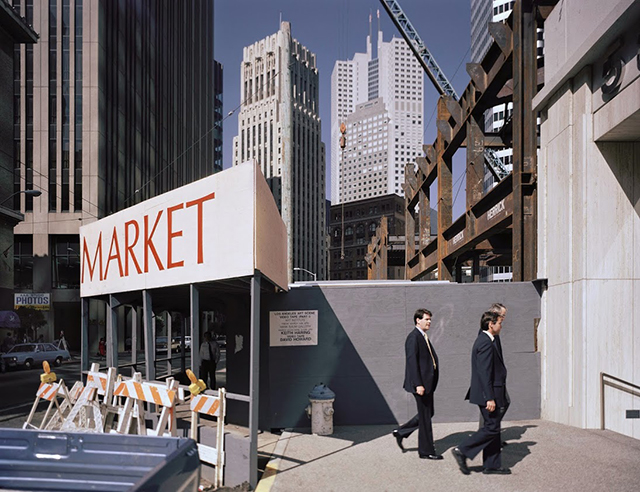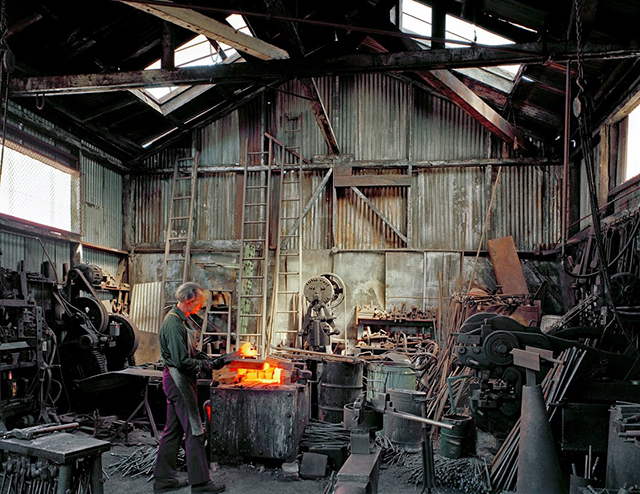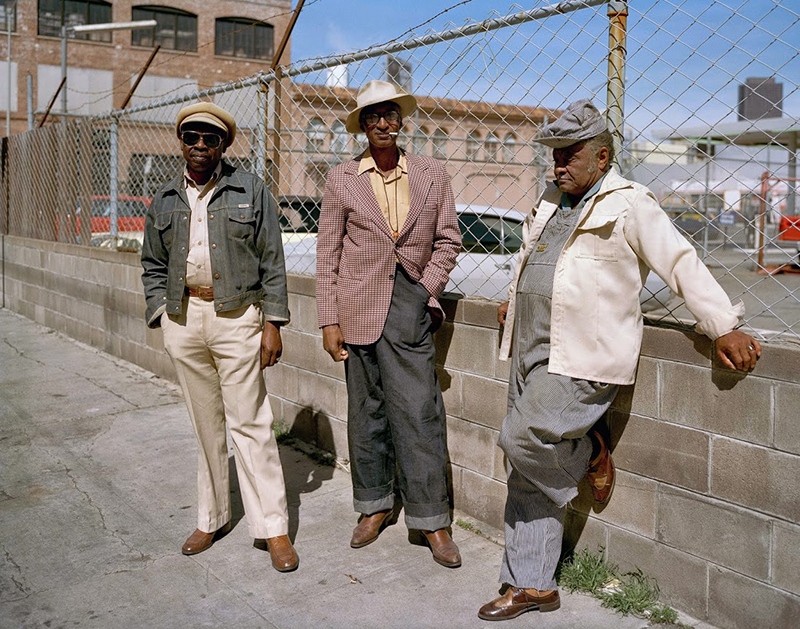Having documented San Francisco’s ever-evolving communities in the ’70s and ’80s, photographer Janet Delaney offers a retrospective moment for a city presently undergoing yet another sea change in South of Market, a new exhibit at the de Young Museum. Concurrently, illustrator Wendy Macnaughton chronicles local neighborhoods through her “drawn journalism.” Both of these artists create images that will portray the future history of San Francisco, and thus, in a meeting of the minds, we asked Macnaughton the illustrator to ask Delaney the photographer a few questions about the changing face of the city.
Your South of Market series documents a pivotal time in San Francisco, when thousands of people’s homes were replaced by more upscale developments. Clearly, this is happening again in the city. Neighborhoods are changing, communities are changing. From the point of view of a photographer, how do you see this change being similar or different than the changes that occurred before?

When I was photographing South of Market, I was focused on the impact that the new Moscone Center would have on the people who lived and worked in the area. This idea defined the project to a specific cause and effectual argument, but I knew that it was indicative of a much bigger issue. Rents had already started to rise even before the center was completed. But it took many years for the area surrounding the convention cente—the “cordon sanitaire,” as the city planners named it—to fill in with hotels and museums. Now, with the new TransBay terminal and high-rise housing coming in, the initial plans of a revitalized downtown seem to be in place. There has been a massive influx of money to San Francisco, because it’s become very welcoming to big business. Great! But how can we harness this new wealth to help stabilize a diverse and vibrate community, and avoid making San Francisco into a homogenous playground for the upper class? SFfound.org lists all the ideas that did not happen, but could have, in terms of development in the Bay Area. Things could be worse if people had not stood up and organized. Yes, I see similarities to the changes I was documenting, but to the credit of many who have invested their time and imagination, some of the changes are definitely for the better. Buying local, hiring local, investing in housing and transportation and supporting the arts will all be more possible with a bigger tax base.
You seem to get great local access—in construction sites, in people’s homes, and generally in every neighborhood. You must be welcomed in order to get the shots you do. How do you do that?

Initially, I snuck onto the construction sites. In the 1970s, they had very little security and rarely worked on the weekends. Eventually I got permission to photograph in the Moscone Center, though by the time I had permission, I was almost done with photographing there. Perhaps the clandestine nature was part of the thrill! I used a view camera which lent credibility to my efforts. I was slow and deliberate, so if someone did not want to be photographed, they could certainly walk away before I even finished setting up the camera. Also, I knew people well, because I lived in the neighborhood and saw them every day.
How did living in the neighborhood affect your work?
Living in South of Market was crucial to this project. First, it gave me a sense of ownership of the area. Secondly, I could keep a close eye on things as they were changing. I walked the streets and alleyways regularly, looking for situations that spoke to the past and the future of the neighborhood. Every bit as important was that I could quickly respond when the light was right.
What’s your general process for getting to know a place, or people, or city?

I often bring my camera with me like a security blanket—there’s nothing worse than seeing something and not having the camera. I may see something that looks compelling, like the new high-rises below First Street, and I’ll head over there numerous times to try to make a single image. I only need one image, but I may go four or five times with my view camera hoping to get the right light, the right location, and the right combination of people walking on the street. In these cases, I set up my tripod and wait for the small dramas to unfold. Other times I’ll use a different camera, a Mamiya 7, which allows more of a “point and shoot” approach. I use this film camera for events such as DreamForce at the Moscone Center. I also made numerous trips to Costco to try to make an image of people coming out of a big-box store. I went so many times the guards started to ask me to leave as soon as they saw me lurking around the front entrance. The camera is much more threatening than the pen!
Have you kept in touch with any of your subjects? Do you revisit the places you’ve shot?

When I was putting together the book, South of Market, I made an effort to find as many people as I could from that time. Some people were untraceable; it was pre-internet. Others popped up on Facebook. I have done a bit of “then and now” work, going back to specific sites to record the difference. But I am more interested in the sense of the place than the appearance of the place. I want to look at how the area is being used now, and by whom. A whole generation has passed since I first started this project. Looking back now has given me a profound sense of time, as measured by urban geology.
Janet Delaney: South of Market is on view at the de Young Museum through July 19, 2015. Wendy Macnaughton is the author and illustrator of San Francisco in its Own Words. See more of her work at WendyMacnaughton.com.